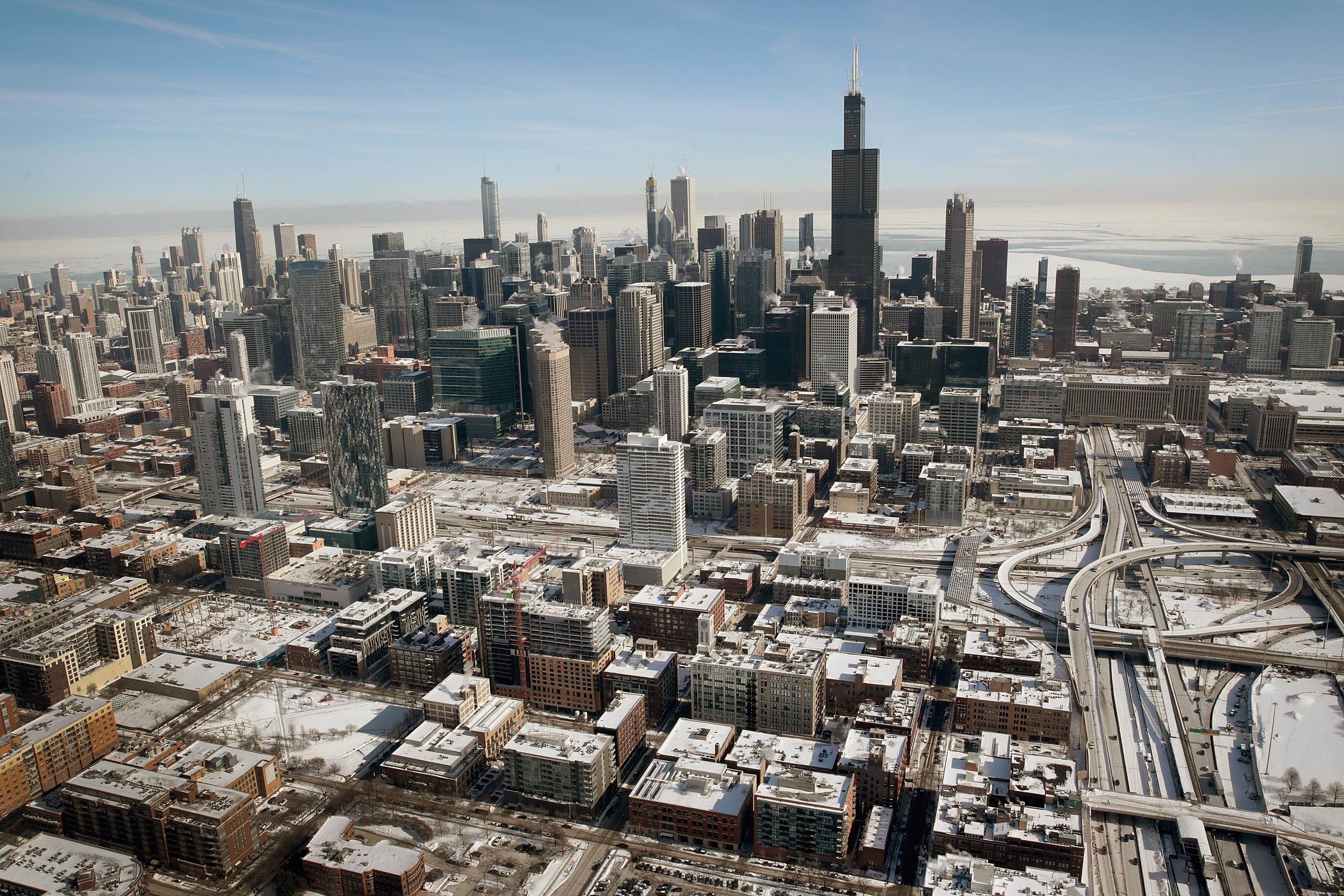
DANGEROUS COLD – Snow and ice cover buildings and streets of Chicago, Illinois, as temperatures dip to minus 30 degrees Celsius, forcing businesses to close and canceling a thousand flights. —AFP
CHICAGO – Temperatures could rise by 26.7 degrees Celsius within days in Illinois. In Michigan, melting snow and rain and a 27-kilometer ice jam could lead to flooding. Across the US Midwest, the sudden warmth was sure to bring more broken roads and busted water mains.
The polar vortex that brought many US cities to a standstill was expected to end with a rapid thaw that experts say could be unprecedented. But the sudden swing from long johns to light jackets and short sleeves could create problems of its own.
Tens of millions of Americans braved Arctic-like temperatures on Thursday as low as minus 49 C that paralyzed the Midwest and were blamed for at least 21 deaths.
Officials across multiple states linked numerous deaths to the frigid air. The death toll rose from a previous 12 after at least nine more people in Chicago were reported to have died from cold-related injuries, according to the John H. Stroger Jr. Hospital in the city.
“I don’t think there’s ever been a case where we’ve seen [such a big] shift in temperatures,” in the winter, said Jeff Masters, meteorology director of the Weather Underground company. “Past record-cold waves have not dissipated this quickly… Here we are going right into spring-like temperatures.”
51 centimeters of snow
On Thursday, the system marched east, spreading arctic conditions over an area from Buffalo to Brooklyn. In western New York, a storm that dumped up to 51 centimeters of snow gave way to subzero temperatures and face-stinging wind chills.
In New York City, about 200 firefighters battling a blaze in a commercial building took turns getting warm on buses.
It has been more than 20 years since a similar blast of frigid air covered a swath of the US Midwest and Northeast, according to the National Weather Service.
The bitter cold was caused by the mass of air known as the polar vortex drifting south from its usual position over the North Pole.
For the US midsection, relief was as close as the weekend.
45 C warmer
Rockford, Illinois, was at a record-breaking minus 35 C on Thursday morning but should be around 10 C on Monday. Other frozen areas could see temperatures of 13 C or higher.
The dramatic warmup will offer a respite from the bone-chilling cold that canceled school, closed businesses and halted trains. But potholes will appear on roads and bridges weakened by the freeze-thaw cycle. The same cycle can crack water mains and pipes. Scores of vehicles will be left with flat tires and bent rims.
Joe Buck, who manages Schmit Towing in Minneapolis and spent about 20 hours a day outdoors this week responding to stranded vehicle calls, said he was already taking calls for Monday to deal with a backlog of hundreds of stalled vehicles.
“Sunday is going to be 39 degrees above zero,” said Buck, who has had 18 trucks running around the clock.
In Detroit, where some water mains are almost 150 years old, city workers were dealing with dozens of breaks, according to the city’s Water and Sewerage Department.
The thawing of pipes can sometimes inflict greater damage than the initial freeze. Bursts can occur when ice inside starts to melt and water rushes through the pipe, or when water in the pipe is pushed to a closed faucet by expanding ice.
Earlier in the day, several cities set new record lows. Rockford saw a record low temperature of minus 35 C on Thursday. Cedar Rapids, Iowa, set a daily record low of minus 34 C.
‘Rotating up into Canada’
Chicago’s temperature dropped to a low of around minus 30 C on Thursday, slightly above the city’s lowest-ever reading of minus 32 C in January 1985. Milwaukee’s low was minus 31 C, and Minneapolis recorded minus 31 C. Wind chills were lower still.
Masters, from Weather Underground, said the polar vortex was “rotating up into Canada” and not expected to return in the next couple of weeks. If it does return in late February, “it won’t be as intense.”
Still, memories of the dangerous cold were bound to linger.
In Illinois, at least 144 people visited hospital emergency rooms for cold-related injuries over two days. Most of the injuries were hypothermia or frostbite, according to a spokesperson for the state Department of Public Health. —REPORTS FROM AP

